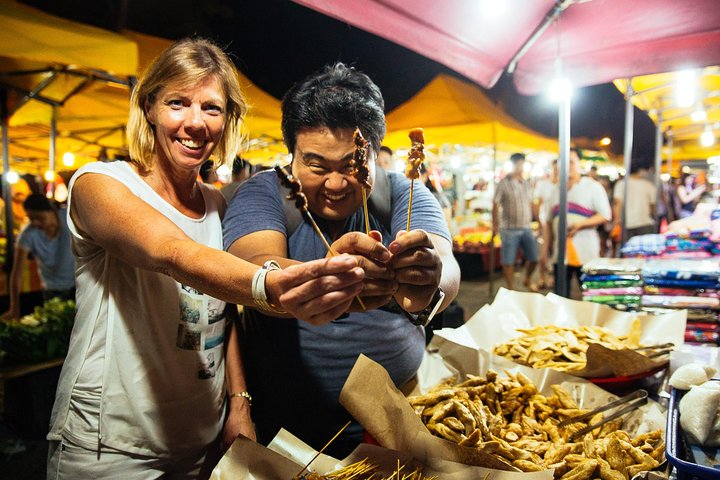Exploring Malaysia’s Cultural Tapestry: Batu Caves and Beyond
Drawn by the allure of Malaysia’s rich cultural tapestry, I embarked on a journey to explore the Batu Caves and traditional crafts. This tour promised a deep dive into the spiritual and artistic heritage of the region, and it did not disappoint.
A Journey Through Time at Batu Caves
As I embarked on the Batu Caves and Handicraft Tour, I was filled with anticipation. The Batu Caves, a limestone hill with a series of caves and cave temples, is a place that has long intrigued me. Known for its natural beauty and spiritual significance, it is a site that draws thousands of visitors each year. The journey began with a friendly and professional driver who picked me up from my hotel in Kuala Lumpur. As we drove through the bustling city streets, I couldn’t help but reflect on the rich tapestry of cultures that make up Malaysia.
Upon arriving at the Batu Caves, I was immediately struck by the towering golden statue of Lord Murugan, a Hindu deity, standing guard at the entrance. The climb up the 272 steps to the Temple Cave was a test of endurance, but each step was a reminder of the spiritual journey that many pilgrims undertake. The view from the top was breathtaking, offering a panoramic vista of the surrounding landscape. Inside the cave, the intricate Hindu shrines and statues were a testament to the devotion and artistry of the people who built them. The atmosphere was both energetic and serene, a place where the past and present coexist in harmony.
The Art of Pewter and Batik
The next stop on the tour was the Royal Selangor Pewter factory, a place where tradition and craftsmanship come together to create something truly special. As someone who appreciates the art of traditional crafts, I was eager to see how pewter is transformed into beautiful and functional pieces. The factory tour provided an up-close look at the meticulous process of pewter making, from the melting of the metal to the intricate designs that adorn each piece. The dedication to quality and innovation was evident in every step, and I left with a newfound appreciation for this age-old craft.
Continuing our journey, we visited the Jadi Batek Gallery, a center dedicated to the traditional art of batik painting. Batik, a technique of wax-resist dyeing applied to cloth, is a cultural treasure in Malaysia. The gallery offered a fascinating insight into the history and evolution of batik, with a museum section showcasing antique and vintage pieces. I even had the opportunity to try my hand at creating my own batik design, a meditative process that allowed me to connect with the art form on a personal level. The vibrant colors and intricate patterns of batik are a reflection of Malaysia’s multicultural society, a theme that resonated throughout the tour.
Embracing Malaysia’s Multicultural Heritage
As the tour came to an end, I found myself reflecting on the rich cultural heritage that I had experienced. From the spiritual significance of the Batu Caves to the artistry of pewter and batik, each stop on the tour offered a unique glimpse into Malaysia’s diverse traditions. The friendly guide provided valuable insights into the country’s multicultural society, enhancing my understanding and appreciation of the places we visited.
This journey was more than just a tour; it was an opportunity to immerse myself in the cultural tapestry of Malaysia. It reminded me of the importance of preserving and celebrating the traditions that define us, a theme that is central to my work as a cultural consultant. As I returned to Kuala Lumpur, I carried with me a deeper connection to the people and places that make this region so special. The Batu Caves and Handicraft Tour is a must for anyone seeking to explore the rich cultural landscape of Malaysia, a journey that promises to leave a lasting impression.






















































